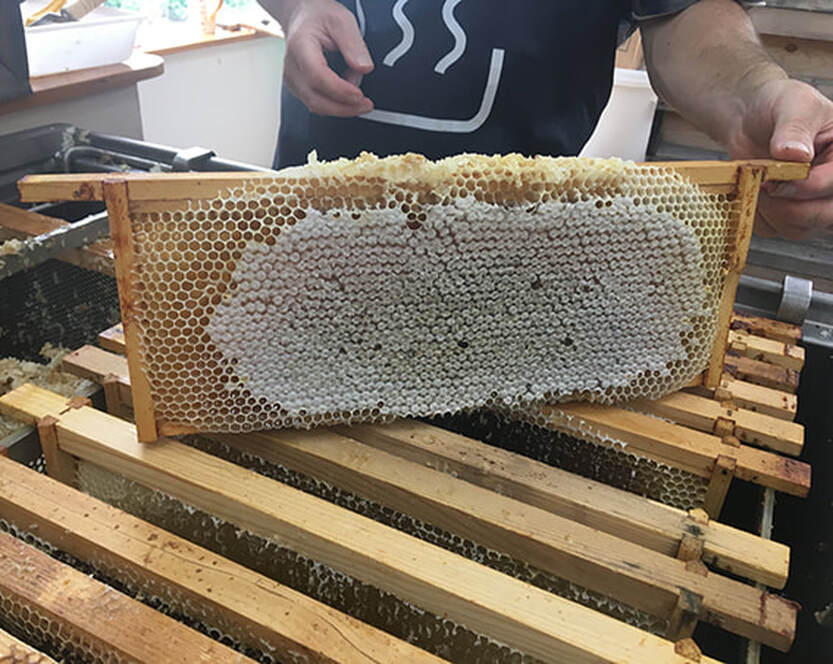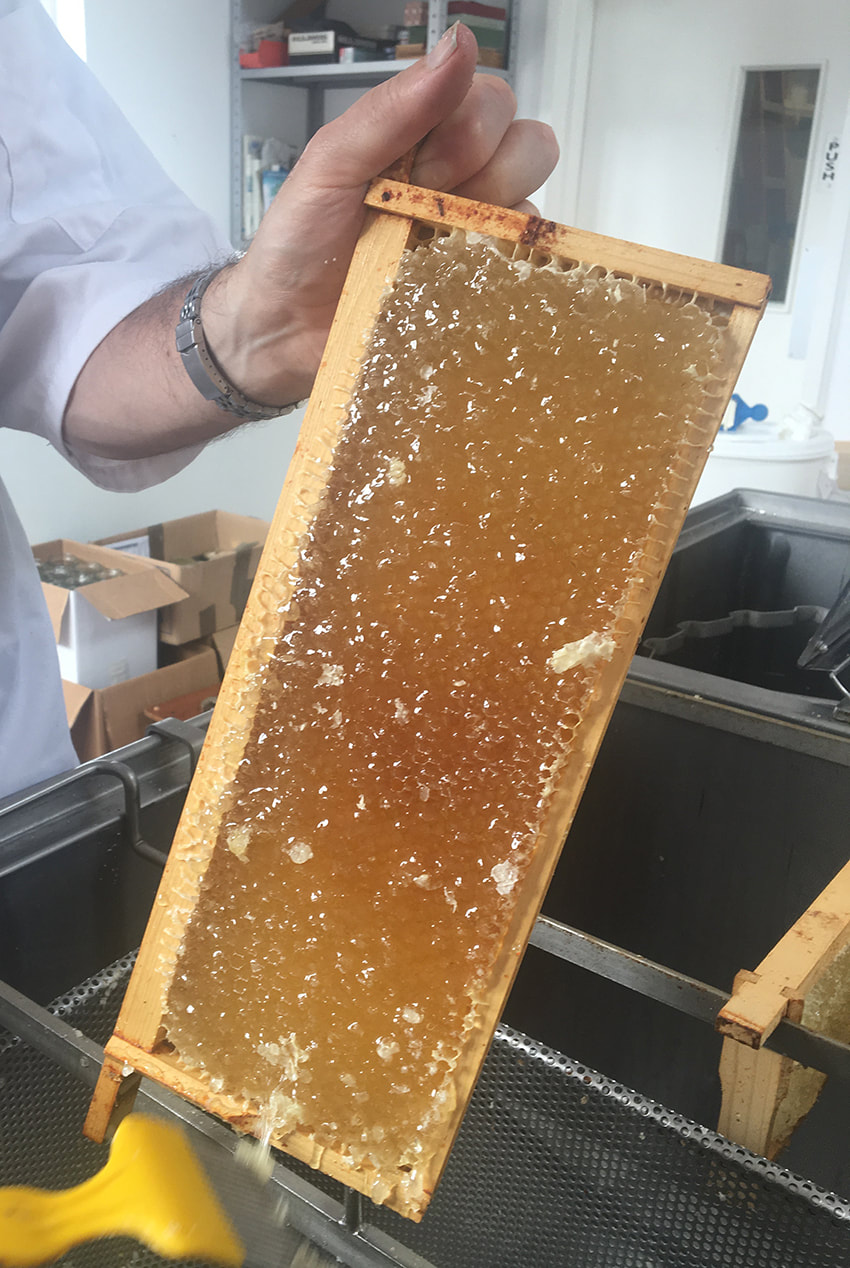Harvesting the honey...
This is a spectacular frame of honey - full almost to the edge, it looks delicate but is surprisingly heavy (about 10kg).
The clever bees put wax 'caps' on each cell to keep the honey safe inside. You can see them here in white.
These caps have to be removed before the honey can be harvested.
Uncapping the cells
So the first job, when you want to extract the honey is to remove these caps.
In the photos below, you can see that my cousin Tom kindly allowed us to come and do our harvesting and extracting at his Bee House. He has all the proper gadgets to do this efficiently including the cap remover in the photo below.
The clever bees put wax 'caps' on each cell to keep the honey safe inside. You can see them here in white.
These caps have to be removed before the honey can be harvested.
Uncapping the cells
So the first job, when you want to extract the honey is to remove these caps.
In the photos below, you can see that my cousin Tom kindly allowed us to come and do our harvesting and extracting at his Bee House. He has all the proper gadgets to do this efficiently including the cap remover in the photo below.
However during Covid we had to do everything at home with household utensils. This is me removing the caps (very carefully) with a sharp knife. Dipping the knife in hot water helps it glide through the caps or cappings.
|
|
|
If you do a good job, you end up with a wonderf (if sticky) frame of open cells and the honey is ready to extract.
Many beekeepers collect and clean these cappings and they can be reused nxt year or made into beautiful beeswax candles OR re-usable bee-wraps for sandwiches or fruit.
Once the caps are off, we can move on to the next stage... extracting the honey
Find out more:
Ros and Anna make a research visit to an Apiary • Where to put a hive?
The HIVE in detail • Inside the Hive • Bee Foraging •
More about the book:
Back to home
Ros and Anna make a research visit to an Apiary • Where to put a hive?
The HIVE in detail • Inside the Hive • Bee Foraging •
More about the book:
Back to home



